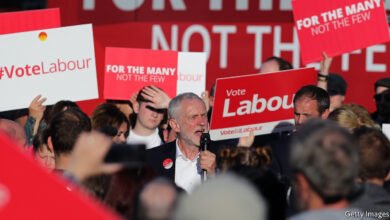US Dollar recovered ground after hawkish Fed decision

- USD rebounds after the Federal Reserve holds rates steady at the 5.25%-5.50% range.
- FOMC members revised their interest rate protections of 2024 to the upside.
- Chair Powell’s emphasis on labor market strength underscores the Fed’s cautious approach.
On Wednesday, the US Dollar Index (DXY) saw an upward trend, following a more hawkish than expected interest rate projections revisions by the Federal Open Market Committee (FOMC). The Dollar managed to clear most of its losses and jump to 104.50 following the softer-than-expected Consumer Price Index (CPI) figures from May which made the index fall to a low of 104.30.
In the highly anticipated two-day FOMC meeting, which concluded on Wednesday, the committee decided to hold the rates steady at 5.25%-5.50%, along with revised, higher-than-expected upward revisions of interest rates. While the decision buoyed the USD, it slightly cooled the enthusiasm for gold and stocks.
Daily Digest Market Movers: DXY reacts positively to hawkish Fed rate revisions
- The Fed’s median projection for the federal funds rate has been revised upward to 5.1% by the end of 2024, reflecting that the Fed demands additional evidence of inflation coming down.
- In an upward revision, the Fed’s 1-year interest rate outlook rose to 4.1%, up from 3.9%.
- The 2-year rate outlook remained steady at 3.1%, while the long-term rate outlook rose to 2.8% from 2.6%.
- In the presser, Chair Powell emphasized the labor market’s strength and reassured the markets of the Federal Reserve’s preparedness to adjust policy according to the evolving economic data.
- Despite the decision to hold the rates steady, the reassessment of the rate path forecast indicates a longer timeline for potential rate cuts.
DXY Technical Analysis: Bulls regain control and recover SMAs
Following the hawkish Fed stance, the indicators on the intra-day outlook recovered but remained in negative area on the daily charts. The index also crossed back above the key support point of 104.50, intensifying the bullish outlook as it now trades above the 20, 100, and 200-day Simple Moving Average (SMA).
Central banks FAQs
Central Banks have a key mandate which is making sure that there is price stability in a country or region. Economies are constantly facing inflation or deflation when prices for certain goods and services are fluctuating. Constant rising prices for the same goods means inflation, constant lowered prices for the same goods means deflation. It is the task of the central bank to keep the demand in line by tweaking its policy rate. For the biggest central banks like the US Federal Reserve (Fed), the European Central Bank (ECB) or the Bank of England (BoE), the mandate is to keep inflation close to 2%.
A central bank has one important tool at its disposal to get inflation higher or lower, and that is by tweaking its benchmark policy rate, commonly known as interest rate. On pre-communicated moments, the central bank will issue a statement with its policy rate and provide additional reasoning on why it is either remaining or changing (cutting or hiking) it. Local banks will adjust their savings and lending rates accordingly, which in turn will make it either harder or easier for people to earn on their savings or for companies to take out loans and make investments in their businesses. When the central bank hikes interest rates substantially, this is called monetary tightening. When it is cutting its benchmark rate, it is called monetary easing.
A central bank is often politically independent. Members of the central bank policy board are passing through a series of panels and hearings before being appointed to a policy board seat. Each member in that board often has a certain conviction on how the central bank should control inflation and the subsequent monetary policy. Members that want a very loose monetary policy, with low rates and cheap lending, to boost the economy substantially while being content to see inflation slightly above 2%, are called ‘doves’. Members that rather want to see higher rates to reward savings and want to keep a lit on inflation at all time are called ‘hawks’ and will not rest until inflation is at or just below 2%.
Normally, there is a chairman or president who leads each meeting, needs to create a consensus between the hawks or doves and has his or her final say when it would come down to a vote split to avoid a 50-50 tie on whether the current policy should be adjusted. The chairman will deliver speeches which often can be followed live, where the current monetary stance and outlook is being communicated. A central bank will try to push forward its monetary policy without triggering violent swings in rates, equities, or its currency. All members of the central bank will channel their stance toward the markets in advance of a policy meeting event. A few days before a policy meeting takes place until the new policy has been communicated, members are forbidden to talk publicly. This is called the blackout period.
Information on these pages contains forward-looking statements that involve risks and uncertainties. Markets and instruments profiled on this page are for informational purposes only and should not in any way come across as a recommendation to buy or sell in these assets. You should do your own thorough research before making any investment decisions. FXStreet does not in any way guarantee that this information is free from mistakes, errors, or material misstatements. It also does not guarantee that this information is of a timely nature. Investing in Open Markets involves a great deal of risk, including the loss of all or a portion of your investment, as well as emotional distress. All risks, losses and costs associated with investing, including total loss of principal, are your responsibility. The views and opinions expressed in this article are those of the authors and do not necessarily reflect the official policy or position of FXStreet nor its advertisers. The author will not be held responsible for information that is found at the end of links posted on this page.
If not otherwise explicitly mentioned in the body of the article, at the time of writing, the author has no position in any stock mentioned in this article and no business relationship with any company mentioned. The author has not received compensation for writing this article, other than from FXStreet.
FXStreet and the author do not provide personalized recommendations. The author makes no representations as to the accuracy, completeness, or suitability of this information. FXStreet and the author will not be liable for any errors, omissions or any losses, injuries or damages arising from this information and its display or use. Errors and omissions excepted.
The author and FXStreet are not registered investment advisors and nothing in this article is intended to be investment advice.




